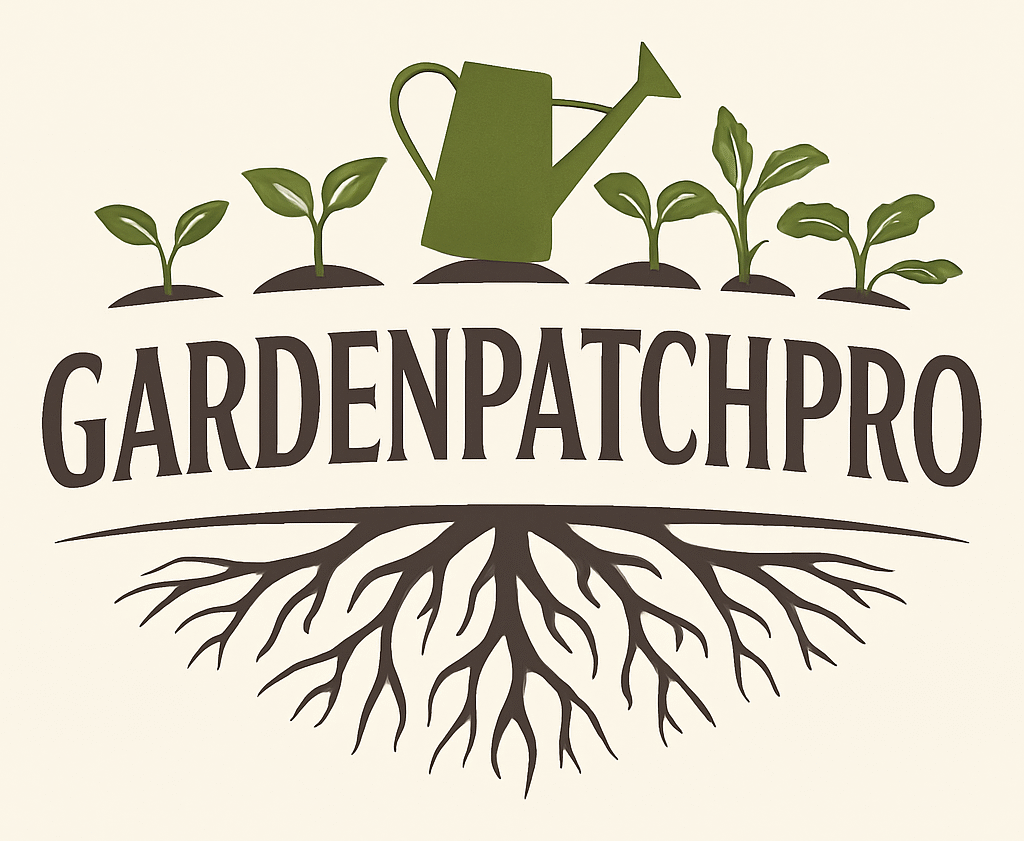14 Rock Garden Ideas for Stunning Outdoor Landscapes
Rock gardens offer a practical and attractive way to enhance outdoor spaces using stones and plants. They can fit into many different yard sizes and shapes, making them a versatile choice for gardeners. People often choose rock gardens for their low maintenance and natural appeal.

A well-planned rock garden adds texture and interest while requiring less water and care than traditional gardens. These gardens can use various rocks and plants to create unique looks that blend with the environment or stand out as a feature.
1) Use drought-resistant succulents like sedum and echeveria for low maintenance
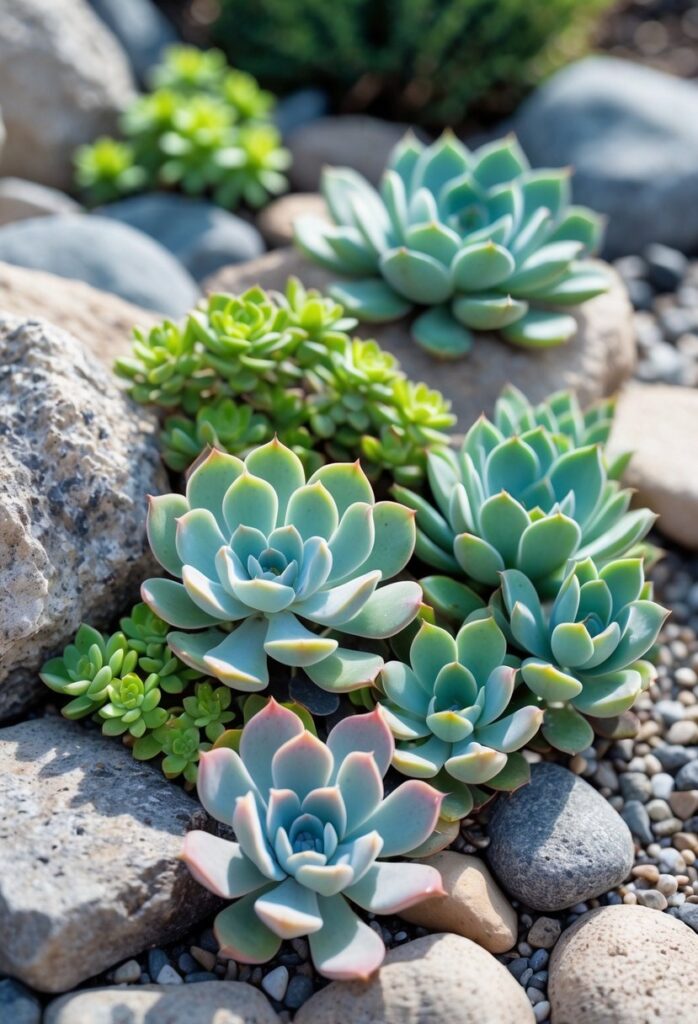
Drought-resistant succulents such as sedum and echeveria are ideal for rock gardens. These plants store water in their thick leaves, allowing them to survive with little watering. This makes them perfect for gardens in dry or hot climates.
Sedum is known for its hardiness and ability to grow in poor soil. It can spread as a ground cover or trail from containers, adding texture and color to the garden. Echeveria features rosette-shaped leaves that come in many colors and shapes, offering visual interest.
Both sedum and echeveria require minimal care and thrive in sunny spots. Their low water needs also reduce maintenance time. Planting these succulents in a rock garden helps create a natural, drought-tolerant landscape that stays attractive year-round.
Learn more about sedum’s benefits for rock gardens at this Sedum Care Guide.
2) Incorporate natural stone pathways to add texture and guide visitors
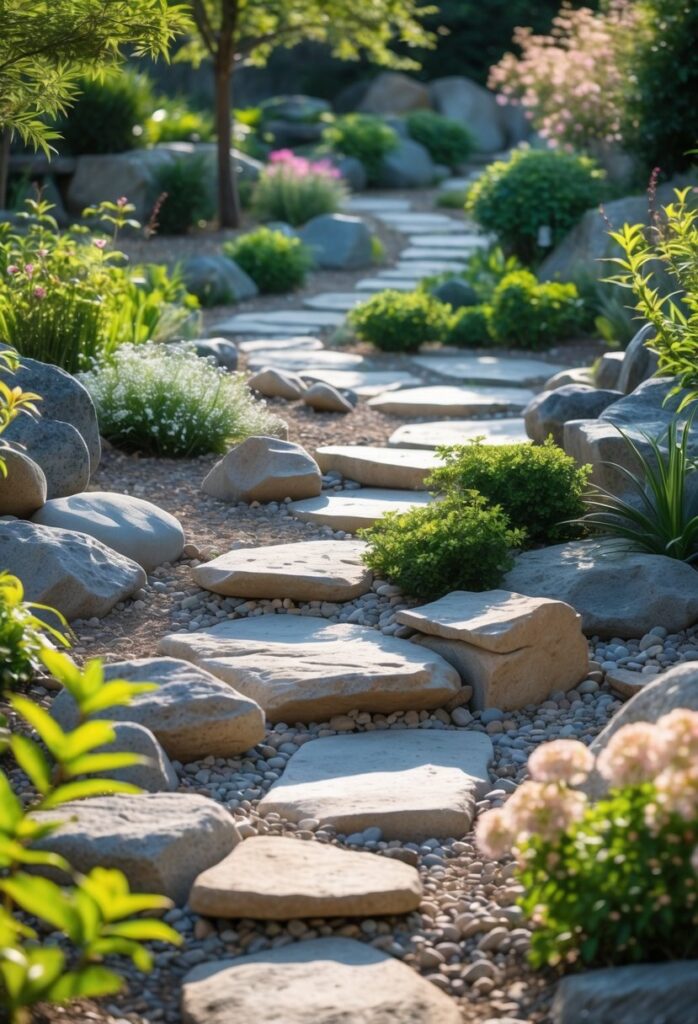
Natural stone pathways create a clear route through the garden. They help guide visitors while adding a solid, textured surface that contrasts well with plants.
Using flat stones or flagstones offers a rustic, natural look. These stones fit smoothly into the landscape and require minimal upkeep.
Paths made of natural stone also reduce soil compaction by focusing foot traffic. This protects grass and plants along the route.
Adding creeping plants like moss or thyme around the stones softens the edges. This creates a blend of hard and soft elements in the garden.
Planning the layout is important. Winding or curved paths feel more inviting and can lead to focal points, like a rock garden or water feature.
For ideas on using stone pathways in landscaping, see creative ways to rock your landscape with natural stone steps and paths.
3) Create layered planting on slopes with cascading ground covers

Cascading ground covers work well on slopes because they spread downward, covering the soil and reducing erosion. These plants help hold the dirt in place while adding color and texture to the garden.
They often grow quickly and fill in gaps between rocks or other features. Using a mix of ground covers with different heights and colors creates a layered look that adds depth to the rock garden.
Common cascading ground covers include creeping phlox, sedum, and vinca. These plants can thrive in rocky, well-drained soil and need little maintenance once established.
By combining several types, the slope becomes a natural, living carpet that softens harsh lines and blends rocks with greenery. This layered planting style turns steep areas into attractive, stable spaces.
For ideas on using cascading ground covers to control erosion and add beauty, see practical tips on plant cascading ground covers.
4) Use boulders as focal points surrounded by gravel or mulch

Boulders work well as natural focal points in a rock garden. Their size and shape draw attention, making them the centerpiece of the design.
Surrounding boulders with gravel or mulch helps highlight their presence. Gravel adds texture and contrast, while mulch gives a clean, neat look around the stone.
Using different colors and sizes of gravel can create a balanced and appealing layout. It also helps with drainage and reduces weeds around the boulder.
Choosing rounded or smooth boulders creates a softer look. Placing several boulders together can add interest without cluttering the space.
This idea supports a simple, low-maintenance garden style. It combines natural beauty with practical benefits, like erosion control and defining garden areas.
For more details on how to arrange boulders with smaller rocks, see 15 tips for landscaping with boulders.
5) Add a small pond or water feature for visual interest and tranquility

Adding a small pond or water feature can enhance any rock garden. It creates a peaceful spot by combining the natural look of rocks with the soothing sound of water. This mix brings a calm feeling to the garden space.
Waterfalls and fountains made with natural stones fit well with rock gardens. They add movement and texture without overwhelming the area. A tiny waterfall or bubbling rock fountain can make the garden more lively and relaxing.
Plants like moss and ferns around the water help blend the feature with the rocks. They add greenery and soften the lines of stones. Small aquatic plants or water lilies can also improve the pond’s look and support local wildlife.
Using a solar-powered pump is a practical way to keep water flowing. It saves energy and keeps maintenance low. For inspiration and ideas on small pond waterfalls, a detailed guide is available at 24 Small Pond & Waterfall Ideas to Enhance Your Garden Oasis.
6) Combine earthy tones with textured stones for a desert oasis look

A rock garden that uses earthy tones and textured stones creates a calm and natural desert feel. Neutral colors like browns, tans, and soft grays mix well with the rough surfaces of natural stones. This pairing brings a balanced and grounded look to any outdoor space.
Layering different sizes and shapes of stones adds depth and interest. Mixing smooth pebbles with rugged rocks gives the garden texture while keeping it low-maintenance.
Adding drought-resistant plants like succulents or cacti enhances the desert vibe. Their green and silver colors contrast nicely against the stones’ warm shades.
Gravel pathways or small rock borders help define spaces in the garden. This layout creates clear lines while keeping the look natural and organic.
For inspiration, see ideas on how to use textured stones and earthy colors for a desert oasis in this guide to rock garden ideas.
7) Install natural rock edging to define garden beds clearly
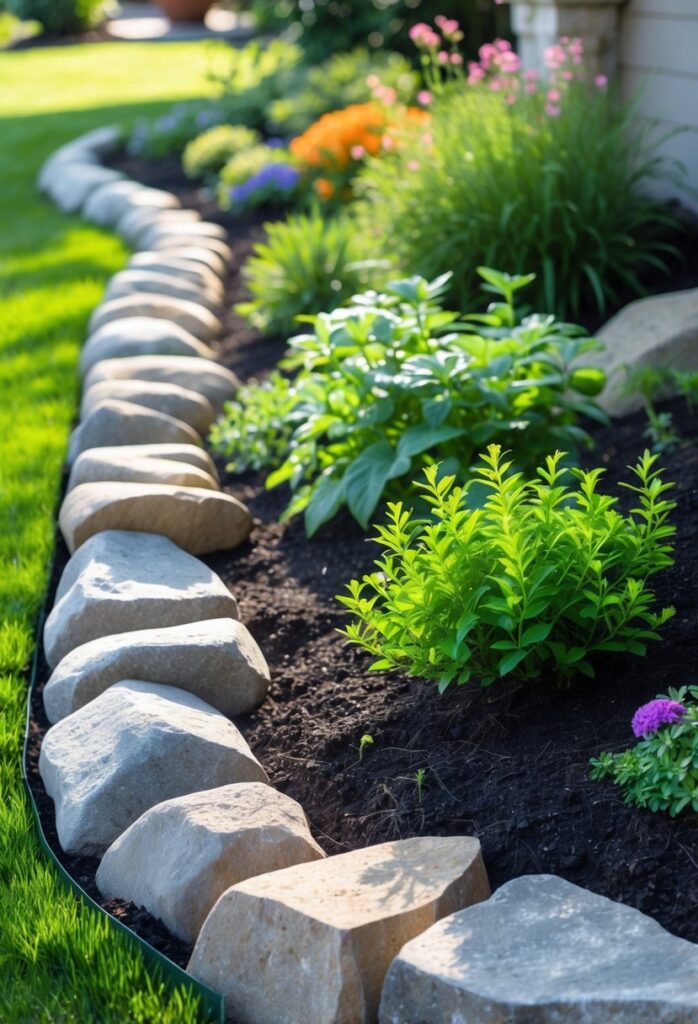
Natural rock edging helps to mark the boundaries of garden beds with a simple, clean line. It adds a sturdy, lasting edge that keeps soil and mulch in place. This prevents erosion and keeps the garden looking neat.
Using different sizes and shapes of rocks can create a textured, interesting border. The rocks work well with many garden styles and plants. They do not require much maintenance once set up.
Rock edging is also cost-effective compared to other edging materials. It blends well with the natural landscaping and adds a subtle, organic look to the garden.
For guidance on using rocks as edging, there are detailed tips on selecting and installing natural stones for your garden at how to use rocks for garden edging.
8) Plant colorful alpine plants in crevices between rocks
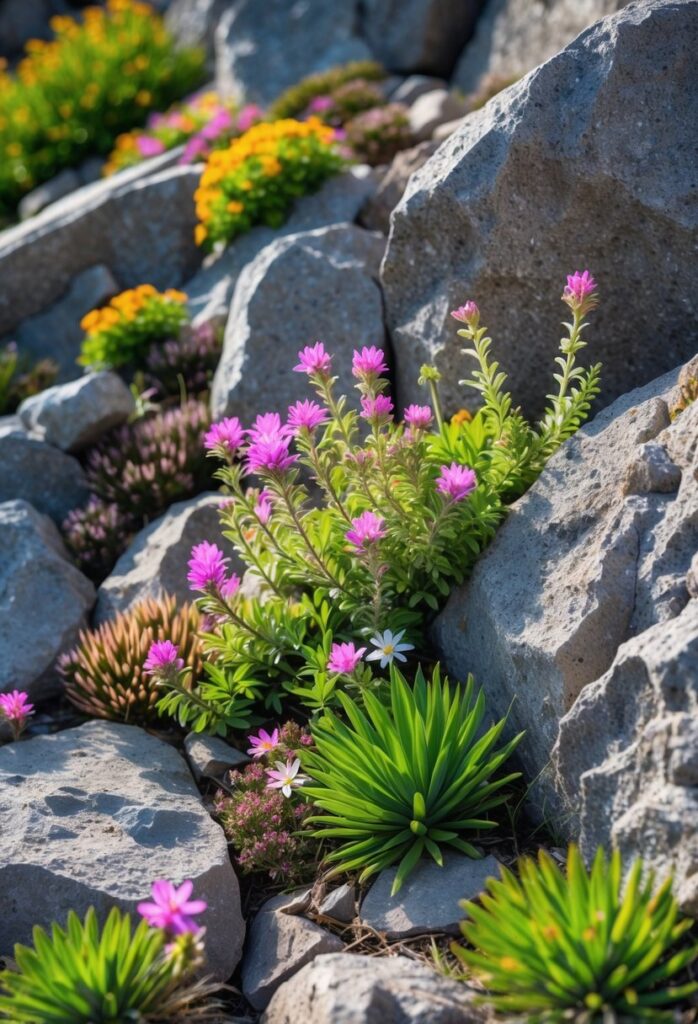
Alpine plants are ideal for filling crevices between rocks in a garden. They grow well in tight spaces with minimal soil and can add color and texture to areas that might otherwise look bare.
These plants are hardy and low-maintenance. They tolerate drought and poor soil, making them perfect for rocky gardens where water drains quickly.
Planting alpines like Saxifraga or Sempervivum in crevices creates a natural look. Their small leaves and flowers brighten the rock garden without overwhelming the space.
Crevice gardening mimics natural mountain environments. Placing plants in narrow rock gaps allows them to grow in conditions similar to their native habitats.
Using alpine plants in rock crevices helps control erosion. Their roots anchor into the rock cracks, stabilizing the soil and preventing it from washing away.
For more ideas on using alpine plants in rock gardens, visit this guide on crevice gardens.
9) Use terracing with rocks to manage uneven terrain effectively

Terracing with rocks is a practical way to shape uneven or sloped ground. It creates flat, stable planting areas that stop soil from washing away during rain.
This technique helps control water runoff and reduces erosion. By building rock terraces, gardeners can make use of hillsides for flowers, shrubs, or even vegetables.
Rocks also add a natural look and can be arranged in different styles to fit the garden’s design. Terraced rock gardens are low maintenance and improve soil quality by holding nutrients in place.
Using terracing is especially helpful in yards with steep slopes. It turns difficult spaces into attractive, functional gardens.
For more ideas, see how terracing can transform a rock garden on uneven land. This method combines beauty and function to solve landscaping problems in many regions. You can learn more about using raised beds and terracing in rock garden design here.
10) Mix different rock sizes for a balanced and natural appearance

Using a mix of rock sizes creates a more balanced look in a garden. Larger stones add weight and focal points. Smaller pebbles fill in gaps and soften edges.
This variety helps the garden appear more natural. It mimics how rocks are found in nature, scattered in different sizes. Mixing boulders with gravel or river rocks brings texture and depth.
It also helps define spaces visually. Large rocks can border garden beds or pathways. Smaller stones work well as ground cover or between plants.
Combining rock sizes can make the garden feel more organized without looking rigid. It provides structure while keeping a natural flow. This idea is popular because it suits many garden styles and sizes.
For more ideas about mixing rocks for landscaping, see 36 landscaping ideas combining boulders, gravel, and river rocks.
11) Include ornamental grasses for movement and contrast

Ornamental grasses add life to rock gardens by creating gentle movement in the breeze. Their soft, flowing shapes contrast well with the hard edges of rocks and stones. This difference in texture makes the garden more dynamic and visually interesting.
Using grasses like Blue Fescue or Fountain Grass can bring color and height to the space. Planting them in small groups mimics natural meadow patterns, giving the garden a seamless, natural look.
These grasses are usually low-maintenance and can thrive in rocky, well-drained soil. They help break up areas of rock and provide a softer backdrop for other plants.
Including ornamental grasses adds depth without needing extra care. Gardeners looking for simple but effective ways to enhance their rock garden will find grasses a useful option.
For more ideas on how ornamental grasses transform rock gardens, see 16 Ornamental Grasses for Textured Rock Gardens.
12) Add native plants suited to your local climate and soil

Native plants are naturally adapted to the local climate and soil conditions. This means they require less water, fertilizer, and care to thrive in a rock garden. Using native plants helps create a low-maintenance and sustainable landscape.
These plants also support local wildlife, providing food and shelter for insects, birds, and other animals. Choosing the right species depends on understanding the local environment and the specific soil type in the garden area.
By selecting native plants suited to your region, a rock garden can better withstand weather changes like drought or heavy rain. It also reduces the need for constant watering and other resources, making the garden more eco-friendly.
For guidance on finding native plants that fit your climate and soil, gardeners can explore resources on how to choose the right native plants for your soil and climate. This helps ensure the rock garden is healthy and in harmony with the natural surroundings.
13) Create a Zen rock garden with sand patterns and minimalist plants
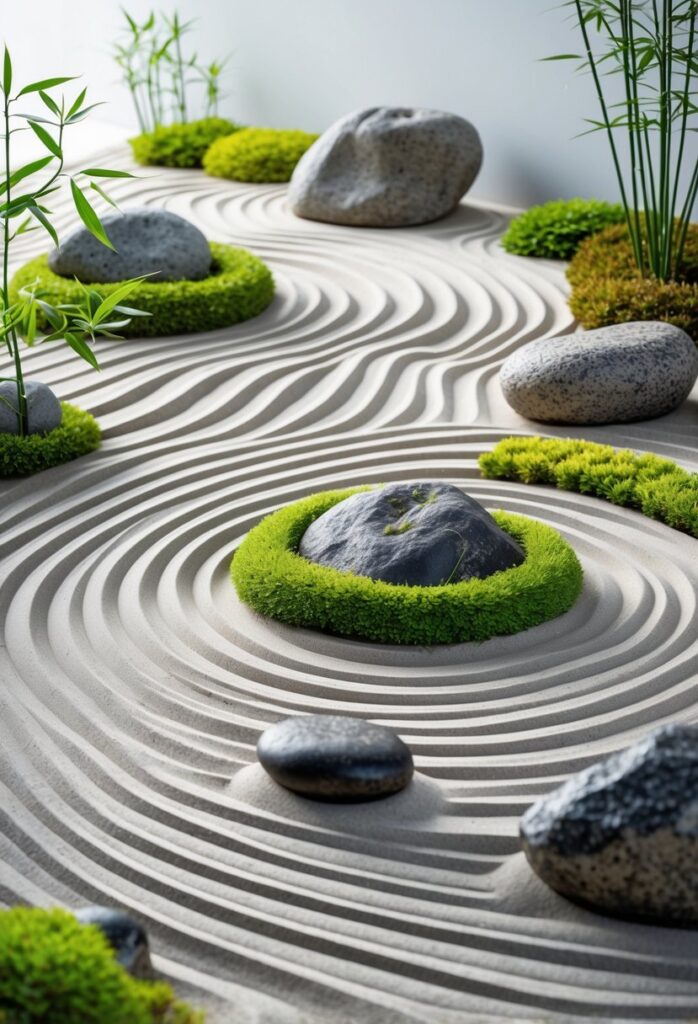
A Zen rock garden focuses on simplicity and calmness. It uses fine sand or gravel as a base, which is raked into smooth, flowing patterns. These patterns often represent water or waves.
Large stones are placed carefully to symbolize mountains or islands. The size and shape of each rock matter to keep a balanced look.
Plants are kept minimal and low-maintenance. Often, moss or small succulents are chosen for their subtle textures. The goal is to maintain a clean, natural feel without clutter.
This style helps create a peaceful space for quiet reflection or meditation. The mix of sand patterns, smooth stones, and simple plants creates a soothing atmosphere.
Using natural colors like grays, greens, and browns is important. It keeps the garden looking grounded and connected to nature.
For more ideas on designing this type of garden, one can explore examples of Japanese Rock Garden ideas.
14) Incorporate moss and lichens on shaded rocks for texture variation

Adding moss and lichens to shaded rocks creates a natural, textured look in a rock garden. These plants thrive in damp, low-light areas, making them perfect for shaded spots. Their soft green hues contrast well with rough stone surfaces.
Moss grows in tufted clusters that blend into rock crevices and soil pockets. This gives the garden an organic, woodland feel. Lichens add subtle color variations and mimic aged stone, enhancing the garden’s depth.
Encouraging moss and lichens can be done by keeping the area moist and cool. Using simple methods, like applying a yogurt solution, helps them establish and spread on rocks. This approach results in a low-maintenance, eco-friendly addition to the garden’s design.
Incorporating moss and lichens highlights natural beauty without overpowering other plants or features. It enhances texture and visual interest while supporting a peaceful garden atmosphere. For more on moss rock gardens and care, see moss rock garden ideas.
Choosing the Best Location for a Rock Garden
Selecting the right spot is key to a successful rock garden. It should support the plants you want to grow and fit well with the rest of the yard. Good drainage and sunlight are vital, as is making sure the garden blends naturally with nearby features.
Evaluating Sunlight and Drainage
Most rock garden plants need plenty of sunlight, usually about 6 to 8 hours a day. South-facing areas often work best. However, some plants prefer partial shade, so it’s important to choose plants that match the light conditions.
Drainage is critical. Rock gardens should be placed where water does not pool. Slopes or raised areas help water drain quickly. Before planting, test the soil by digging a small hole and filling it with water. If it drains in less than an hour, the spot is good. If not, improve drainage with gravel beneath the soil.
Blending With Existing Landscape Features
A rock garden works best when it fits the shape and style of the yard. It can highlight uneven ground, like slopes or terraces, or serve as a natural border. Rocks can be used to edge paths or flower beds, creating a clear but soft division.
The size and style of the rock garden should match nearby plants and structures. Using similar stones or colors will create a harmonious look. Avoid placing the garden where it will block views or seem out of place. Instead, it should feel like a natural part of the landscape.
For detailed ideas on location choices, see 15 Rock Garden Ideas – 6BC Botanical Garden and 21 Best Rock Garden Ideas – How to Make a Rock Garden.
Rock Garden Maintenance Tips
Keeping a rock garden clean and orderly takes regular effort. Key points include controlling weeds without harming plants and adjusting care based on seasonal changes.
Managing Weeds Effectively
Weeds can quickly disrupt a rock garden’s look. The best way to reduce weeds is to use a weed barrier fabric under the rocks. This blocks weed growth while allowing water to drain.
Regularly pulling weeds by hand prevents them from spreading seeds. Using mulch or small gravel around plants makes it harder for weeds to grow.
If weeds are persistent, a targeted weed killer safe for surrounding plants can be used. Avoid spraying broadly to protect drought-tolerant plants common in rock gardens.
Seasonal Care Routines
Seasonal care helps keep a rock garden healthy year-round. In spring, clearing away debris like fallen leaves and broken branches improves airflow and sunlight.
Summer care focuses on monitoring soil moisture. Rock gardens do well with minimal water, but during droughts, occasional deep watering helps plants avoid stress.
In fall, pruning dead plant material reduces pests and diseases. Checking for loose rocks and resetting them helps maintain structure before winter.
Winter care involves removing heavy snow buildup to prevent rock displacement and protecting sensitive plants with frost cloth if needed.
Frequently Asked Questions
Designing a rock garden well involves choosing the right plants, stones, and layout while keeping costs and upkeep manageable. Proper placement, plant selection, and understanding space limits will help avoid common pitfalls and create a balanced look.
How can I design a rock garden on a budget?
Using local stones can reduce costs. They add natural texture without extra expenses. Choosing drought-resistant plants like sedum and echeveria cuts down watering and maintenance costs.
Mulch or gravel can replace expensive soil amendments. A simple layout focusing on a few boulders as focal points helps keep the project affordable and attractive.
What are essential maintenance tips for a rock garden?
Regularly clear weeds between rocks to keep the garden tidy. Inspect drainage to prevent water pooling, which can harm plants.
Prune ground covers and succulents to maintain shape. Seasonal checks ensure that plants and stones are correctly positioned and healthy for year-round appeal.
How can rock gardens be implemented in small front yards?
Using compact, drought-tolerant plants fits well in small spaces. Natural stone pathways can guide visitors and add style without crowding the yard.
Layering on gentle slopes with cascading ground covers creates depth without needing much area. Keep water features small to avoid overwhelming limited space.
What are the design differences between a rockery and a traditional rock garden?
A rockery often emphasizes raised or terraced areas with heavier use of stones to create height and structure. Traditional rock gardens focus more on flat layouts with mixed plantings amongst stones.
Rockeries usually involve building retaining walls or slopes, while traditional rock gardens use ground-level arrangements with natural stone clusters.
What are some common mistakes to avoid when setting up a rock garden?
Avoid overcrowding plants and stones, which can look messy and limit growth. Poor drainage is another issue that leads to plant stress or rot.
Choosing plants that require too much water or shade can cause maintenance problems. It’s important to match plants with the garden’s exposure and climate.
What are the potential drawbacks of installing a rock garden?
Rock gardens can become hot in direct sun, stressing some plants. They may also require more weed control than lawns.
Initial setup can be labor-intensive. Additionally, if drainage is not planned well, water can collect and damage plants or stones over time.
For ideas on plant choices and layout, see these creative rock garden ideas.
